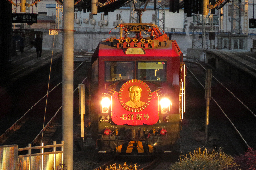Funao is a train station on the Gotōji Line of JR Kyushu on the Japanese railway network. The line was originally built to serve the gravel mine and it still serves the gravel mine
…with passenger trains only.
All sidings were removed and freight service was discontinued.

The only one that remains seems to serve as a spur for maintenance of way equipment


Today the only way freight leaves is via truck

While it’s good that the mine has a passenger station for mineworkers, the lack of freight service is a stunning failure of logistics and is a symptom of the larger way that freight is moved in Japan.
Aggregates are an ideal commodity for freight rail. They are very heavy but are not that valuable per ton, making rail the cheapest and most effective way to move the product over land. This is an easy economic decision that even most capitalists understand, and therefore most heavy industry has rail access.
Except in Japan. In Japan, the railways have the opposite problem that American trains have. In America, passenger rail is almost entirely sidelined for profitable oil and coal trains, because the freight companies control the railroads. In Japan, the passenger train companies control the railroads, and they have de-prioritized freight nearly entirely except for container trains. The railroads closed down almost all of the freight railyards, an essential component of freight service. They have stopped basically all door to door freight service, with the demolition of many sidings and spurs, and the JR companies continue to rip up more freight track every year.
This is partially mitigated by a lot of freight traveling by sea, but that still is worse for the environment vs electrified freight trains. The use of container trains is a creative solution to the problem (which is worth another post in its own right) but is not enough to solve the problems posed by a near complete abandonment of freight rail.
The worst part about all this is that by embracing freight it might be possible to save more rural lines. With a shrinking rural population many rural train lines are closing down because of lack of passengers. If those lines had good freight service, it might be a good way to keep those lines open and in the black. Japan is shooting its own economy in the foot by trying to rely on trucks and ships for everything.
Note: When I am talking about door to door freight service, I am talking about carload freight. I made a megathread explaining how carload freight works here a couple years ago.


I’m not sure this is as clear cut given most of Japan’s electricity supply is from fossil fuels now? Too lazy to do math